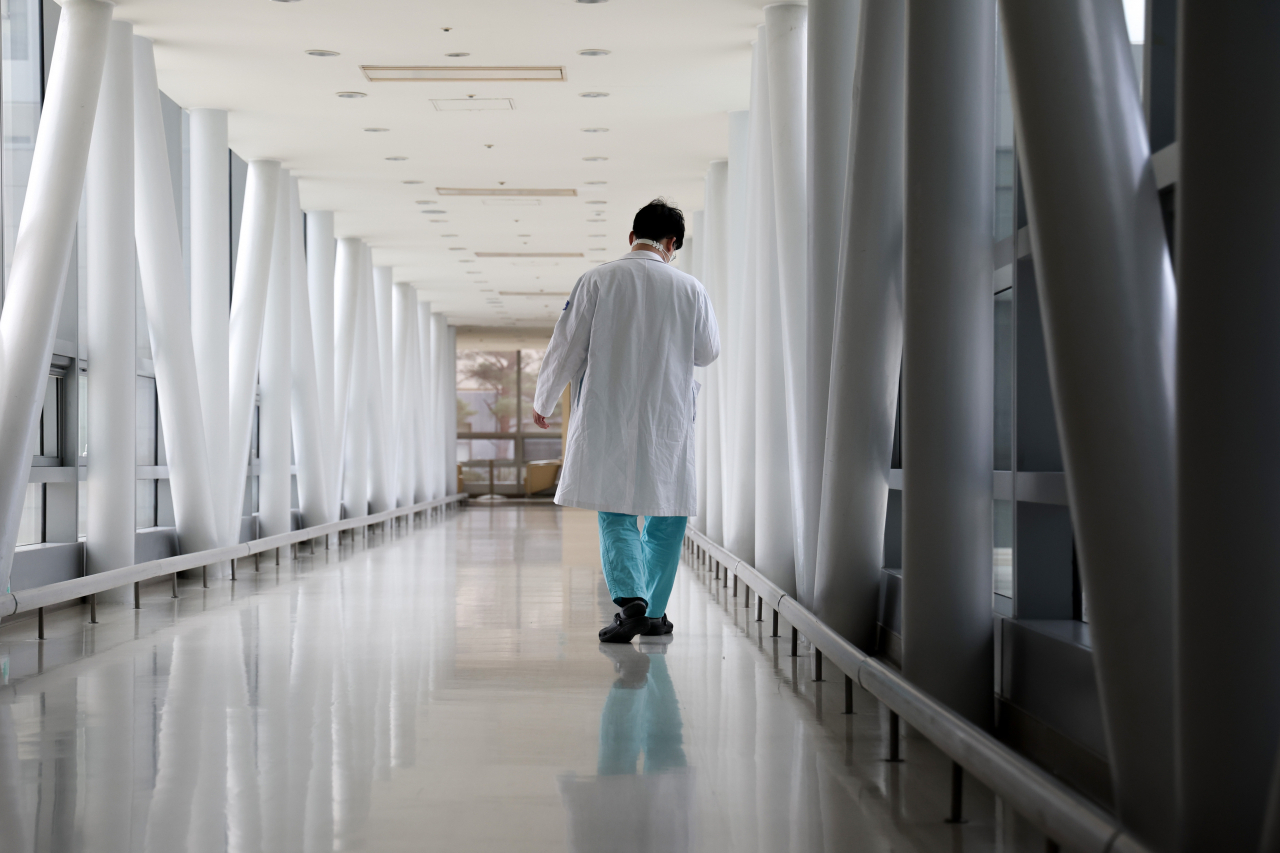[News Analysis] S. Korea's medical crisis: no end in sight
Despite prolonged confrontation, government, doctors both have little to lose, according to observers
By Choi Jeong-yoonPublished : March 24, 2024 - 15:39

The ongoing conflict between the government and medical communities over a medical student quota expansion plan shows no signs of tempering, with both parties refusing to back down despite confusion spreading at hospitals across the country.
Watchers say this week could be the peak of the conflict, as the Health Ministry begins from Tuesday to suspend the medical licenses of trainee doctors who have defied a return-to-work order.
The government has sent prior notices of license suspension to some 5,000 trainee doctors, who are required to submit their opinions on the punitive step by Monday. After the deadline, the ministry will be allowed to send formal notices of license suspension from Tuesday.
The presidential office on Sunday confirmed the suspension will take place as planned.
"The government hopes to avoid administrative and judicial actions," said Sung Tae-yoon, presidential chief of staff for policy on Sunday, asking trainee doctors to come back to work before such procedures are initiated.
The Yoon Suk Yeol administration piled pressure on doctors last week by finalizing the procedures for the medical hike plan Wednesday. The government allocated 82 percent of the increased quota to 27 schools outside the Greater Seoul Area, and the remaining 18 percent to schools in Incheon and Gyeonggi Province. No additional seats were granted to the eight medical schools located in the capital city.
The move, marking the first expansion of the medical school admissions quota in 27 years, was met with fierce resistance from the medical circle. Nearly 93 percent of some 13,000 trainee doctors have staged walkouts while medical university professors were planning to tender resignations en masse on Monday.
The reasons behind the ongoing game of chicken between the government and medical circles stem from the notion that both sides have little to lose, observers say.
Amid the walkout of junior doctors, major general hospitals have only been accepting severely ill or emergency patients, sending patients with milder ailments to smaller medical organizations, ultimately stabilizing the chaos at hospitals and taking pressure off the government for failing to handle the "medical crisis."
The government also deployed military surgeons and public health doctors to hospitals hit hard by the strike and formally allowed nurses at major hospitals to perform CPR and administer medication to emergency patients to make up for the shortage of medical staff.
Some observers have said the government should use this opportunity to reduce the dependence on trainee doctors at large hospitals and eliminate the convention of patients with milder symptoms seeking treatment at large hospitals.
Unlike when the government was forced to make concessions over its push to separate medical institutions and pharmacies in 2000 or its push to expand medical school quotas in 2020 amid pandemic-induced chaos in the medical field, the current situation appears to have stabilized, with the government having no pressing reason to give in.
From the government's perspective, there has also been an unintended outcome of the ongoing medical void -- a decrease in health insurance spending.
As the number of patients at large hospitals has dropped to less than half of normal levels, health insurance spending at hospitals decreased.
Doctors also don't seem to view the government's hawkish stance on suspending their licenses as a big deal, as the suspension will likely have little impact on their future in the medical field.
Under South Korea's medical law, doctors refusing to comply with the state back-to-work order could face a minimum three-month suspension.
As junior doctors are also required to undergo additional training in the event of a gap exceeding one month, the suspension of their licenses would have an adverse, but not overly serious, impact on their career path.
Despite the deadline for the suspension of licenses being imminent, trainee doctors show little or no sign of budging as they will be able to return to the field once their suspensions are lifted.
With an absolute shortage of doctors, it is impossible to normalize the health care system without relying on trainee doctors, observers explained.
Having the full support of the entire medical community behind them is another reason for the doctors' "confidence."
Joining the collective action, professors of medical schools nationwide will begin to submit their resignations on Monday and will reduce their weekly hospital work hours to 52 hours by adjusting surgeries and other medical treatments.
Starting April 1, they will also "minimize" medical services for outpatients to focus on seriously ill patients and emergency patient care.
Medical students have also shown support by refusing to attend classes or handing in absence letters.
Meanwhile, Han Dong-hoon, the interim chair of the ruling People Power Party, held talks with members of the Medical Professors Association of Korea on Sunday to discuss matters surrounding the hike plan.
Though the content of the meeting was not revealed specifically, it was seen as a move by the party to mediate the escalating conflict between the government and doctors' organizations over the expansion of medical school seats.
Han told reporters he would do what he has to do as a politician to foster constructive dialogue between the government and medical communities, as asked by both parties, to prevent people from suffering damage as a result of the ongoing medical void.




















